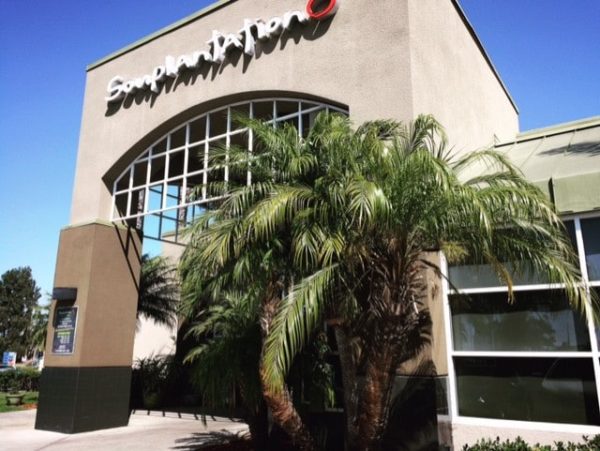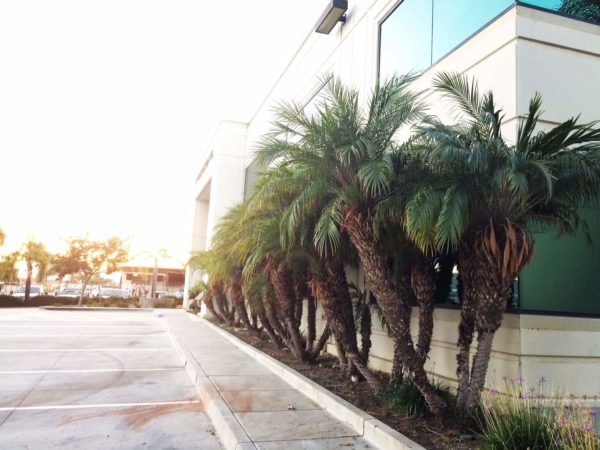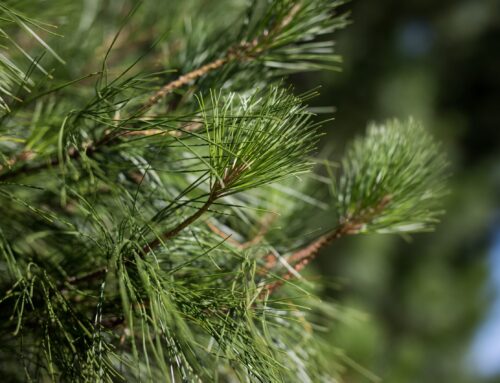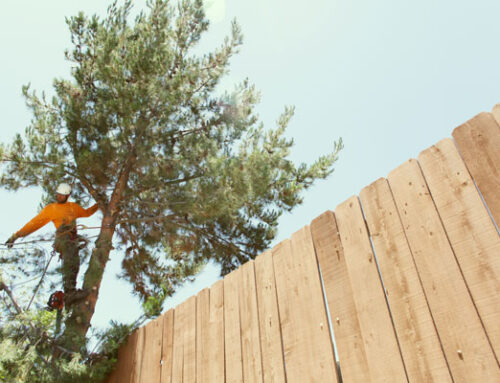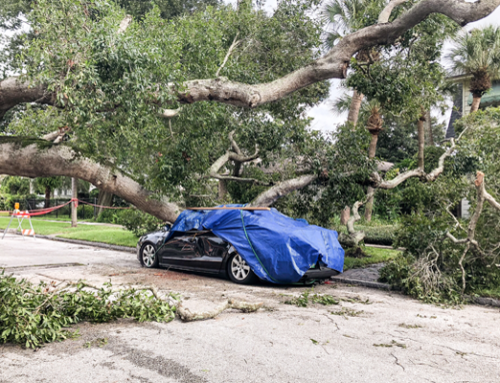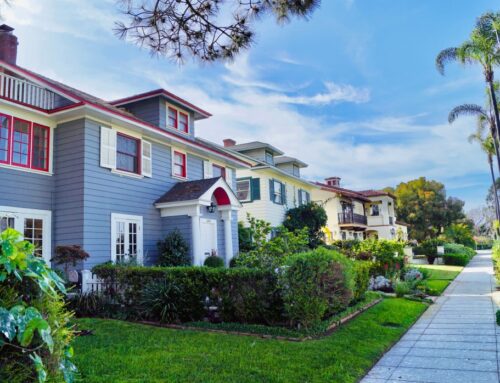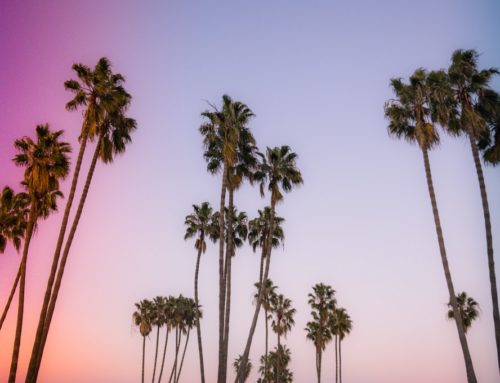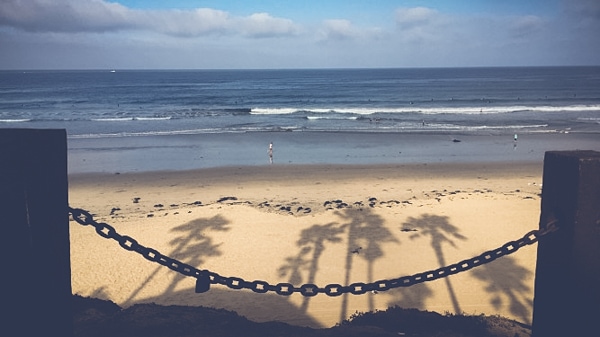
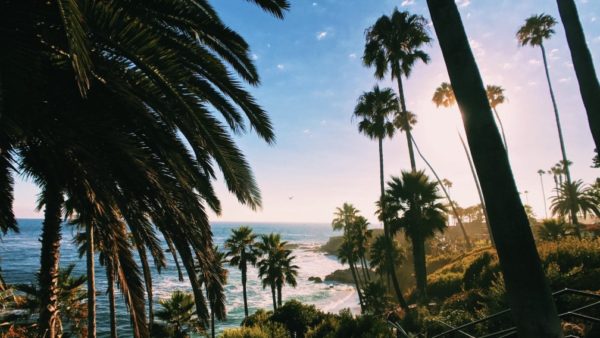
With their pointy green fronds swaying in the gentle breeze, the famed palm “tree” is iconic to San Diego and the rest of Southern California. They line our streets, cluster around our homes and buildings, and create a sit-back-and-relax backdrop at our sandy beaches.
While typically referred to as a tree, the palm is actually NOT a tree. They are classified as monocots (possessing a single embryonic leaf)—making them more related to grass and bamboo. Palms are often called trees because of their towering stature, woody trunk, and green foliage—but if you look closely, you’ll see that their anatomy is nothing like that of a tree. By definition, a tree is a woody perennial plant with a trunk and lateral branches. They also possess secondary growth—the increase in girth of the trunk and limbs, which is how age rings are formed in wood cuttings from trees. Each year, a tree’s trunk and limbs will continue to thicken up as it matures, whereas a young palm will thicken up until it reaches a certain circumference and then will only grow upwards from there. This is why you will see short stumpy palms with the same trunk girth as tall, soaring palms.
History
Palms are so abundant in Southern California, that you would think that they were all native to this region. Well…they’re not. One hundred years ago, San Diego’s terrain consisted mostly of dirt and brush—like what you see when you drive through the rolling hills surrounding the 52 freeway or driving past Camp Pendleton on the 5 freeway. Only one palm species is actually native to San Diego. ONE! The California fan palm. And ironically, it isn’t even a common palm in this area. It’s foreign relatives have taken over its homeland.
The most common palm species that permeate San Diego and the rest of Southern California originated from Mexico, South America, Africa, the Middle East, Australia, and Asia. It is believed that they were first brought to California by missionaries in the 18th century to be used as landscaping around the first missions, since the palms brought a touch of the biblical Mediterranean lands to this region. However, the palm population didn’t explode until the 1930’s when the city of Los Angeles took on a monumental beautification project in preparation for the 1932 Olympics. As a result, roughly 40,000 palms were planted in the city—which changed the entire look of LA and the rest of Southern California into what we know today.
What are San Diego’s most common palms?
Now that you know a little bit more information on the palms—their classification, their history, the nerdy stuff—time to find out which palm “trees” are most common in San Diego. In no order of popularity, here are our choices for the 6 Most Common Palms in San Diego.
1
MEXICAN FAN PALM
Washingtonia robusta
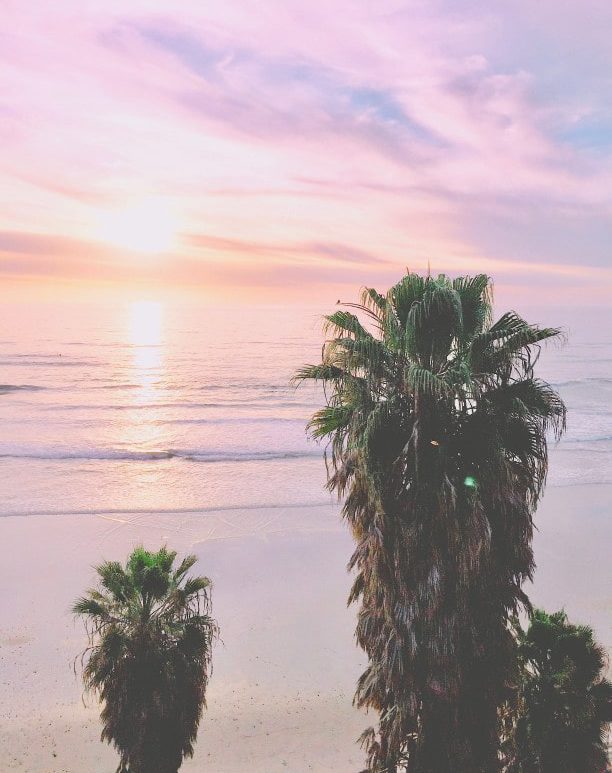

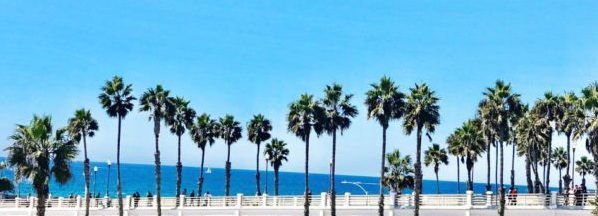
When people envision the stereotypical Southern California sight of palm trees lining the streets and sandy beaches, they envision the popular Mexican fan palm. San Diego is home to thousands upon thousands of these rugged, soaring, drought-tolerant palms. They are such a common sight in this city, that in most neighborhoods, you can see them from almost any home. That’s because not only are they everywhere, but they grow tall—reaching heights of more than 100 feet. They are a popular choice in city and commercial landscaping due to their hardiness, rapid growth, and low maintenance. However, their soaring heights tend to be too tall for most residential properties.
Of all the common palms in San Diego, the Mexican fan palm is by far the most high-maintenance when it comes to managing its looks. Unlike other palm species, the fan palm does not release its dead fronds—but it requires you to hire a tree trimmer once a year to prune them off. Otherwise, if left uncared for, these dead fronds will collect and collect and collect into an unsightly, brown, heap of BLEH (for lack of a better word). This dry conglomeration can quickly turn into a safe covering for rats and mice—and having a family of vermin close to your home or building is never a good idea.
Since the husk base of the fronds sticks like glue to the palm’s trunk, after a fan palm is pruned, the base of the husk still remains attached, creating a jagged appearance. For some people, this look is unfavorable, so aside from having the dead fronds annually trimmed off, some property owners also like to have the palm’s trunk skinned to give it a cleaner, smoother appearance. Smooth is the new black! Occasionally, you’ll find a fan palm with a trunk that was self-skinned by the elements or by a dead frond skirt that detached and cleaned up the trunk on its way down.
While Mexican fan palms need more help in the beauty department, they require minimal—sometimes even zero—maintenance when it comes to water care. This is why they are a popular choice for landscaping along the freeways, and why you’ll find them clustered in canyons, where the only water they receive is from the 12 inches of annual rainfall that San Diego receives on average.
The cost of maintenance for the Mexican fan palm depends on the look that you desire. This is a palm with versatility—as they can look rich and luxurious or dirty and ragged. For a more upscale presentation, it is recommended to have a tree trimmer prune them 1-2 times a year, depending on how perky you like the fronds. Keeping the trunk skinned also gives it a more tropical and opulent feel. On the other hand, sometimes fan palms are planted just for the sake of having palms on the property. Little or no concern is given to their appearance—as is the case for most city palms, especially those lining the freeways. These palms are allowed to run wild and sometimes end up developing a dead frond skirt down its entire trunk (all 100 feet of it, in some cases).
FEATURES
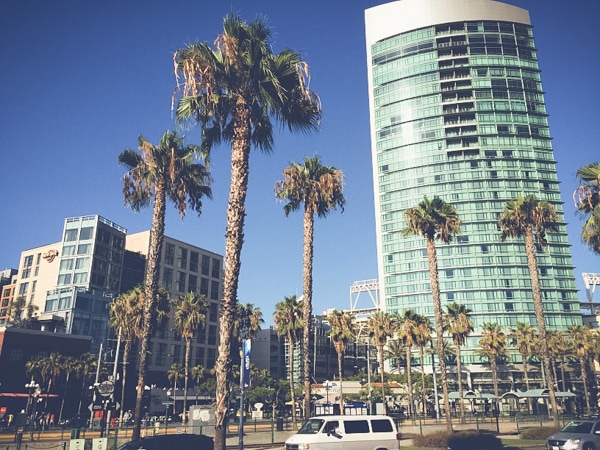
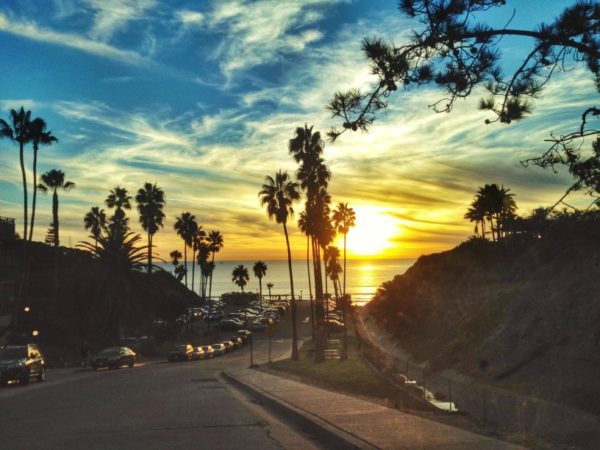
2
QUEEN PALM
Syagrus romanzoffiana
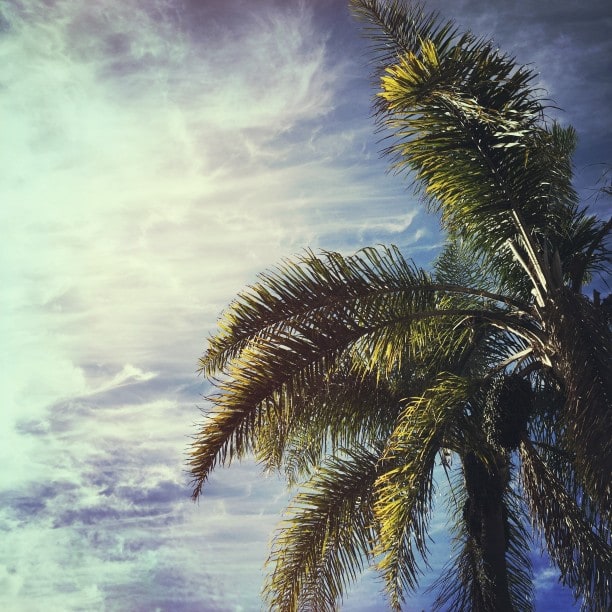

While the Mexican fan palm is the most common palm used on city land, the graceful queen palm ranks #1 when it comes to private properties in San Diego. This palm species is admired for its feathery fronds—but don’t let that soft display fool you, because the tips of those fronds can still give you a painful poke! Elegant like royalty and tall in stature, the queen palm can grow to more than 50 feet tall—shorter than the gangly Mexican fan palm, but taller than its palm “spouse”—the king palm.
Queen palms may grow tall with a longitudinal spread of up to 25 feet, but getting them to that point can take patience. When they are young, unfortunately they lack the pizzazz that their mature counterparts have, because quite honestly—they look like odd sticks planted in the ground. But with some tender love and care, these palms can grow up to 2 feet per year. To foster quick growth, it is helpful to provide a location that receives full sun and has well-draining soil. Additional palm fertilizer applied around the base is also a great option. It is also important to utilize the palm’s own mechanism of energy absorption by keeping the palm’s fronds lush and full, as they are necessary for photosynthesis.
Originating from South America, the queen palm is made for subtropical and tropical weather. It thrives in San Diego’s sunny climate, and even fares well in the heat of East County. This species is drought-tolerant, and once established, it requires little maintenance. Providing a deep watering once a week is recommended, but it’s all contingent on the season, location, soil conditions, and condition of the palm. We have see some perfectly healthy queen palms thrive with only being watered once a month.
One of the great features of the queen palm is their ability to self-prune. This doesn’t mean, however, that queen palms don’t require a regular trimming. Unlike the Mexican fan palm, the queen palm doesn’t care to collect years of dead fronds. The dead fronds eventually fall—although it could take several months. And because their long fronds can grow up to 12 feet long, it creates an unsightly distraction when dead fronds are drooping along the trunk—sometimes almost to the ground.
FEATURES
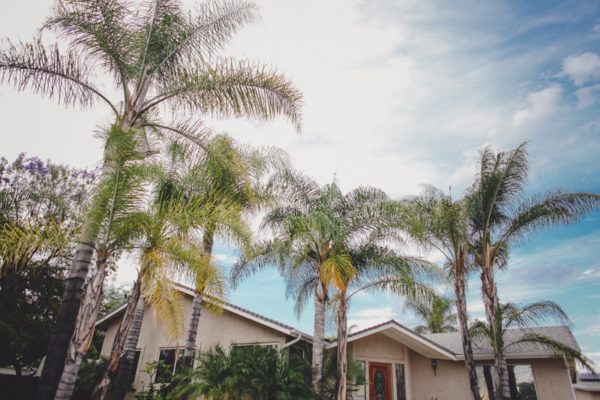

3
KING PALM
Archontophoenix cunninghamiana
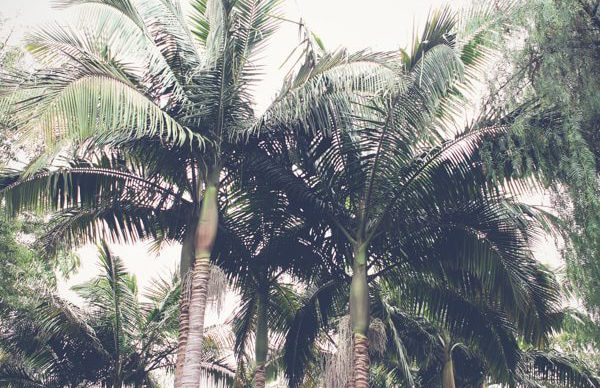
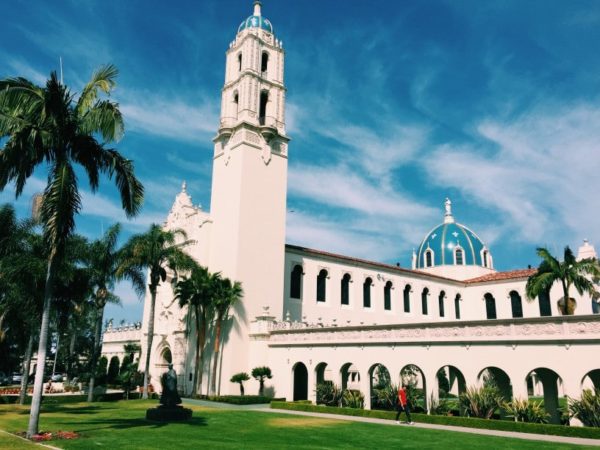
Just like king and queen pieces on a chess board, the king palm lacks in size compared to the matriarchal queen palm. At full maturity, it can stand around 40-50 feet high with a canopy spread of 10-15 feet. Even though this species may be slightly shorter in stature, it’s brighter green fronds, along with its smooth, multi-colored trunk makes the king palm the more appealing choice for many. With the upper green portion of its trunk, it presents more of a tropical feel. Plant some of these around your swimming pool, and you’ll feel like your floating around in Hawaii.
Many times, landscapers and property owners will plant king and queen palms together. Just as a married couple should compliment each other well, so does this palm pair. The queen palm provides her towering height, while the king palm contributes his brighter colors and tropical swagger.
Native to the Queensland rainforest of Australia, the king palm is a hardy plant that can handle heat and drought conditions once it is well-established—although it tends to be a bit more sensitive to water deprivation and heat than the queen palm. This is why you will find the king palm more prevalent in the mild coastal neighborhoods of San Diego. In East County, they can fare well, but extra deep-watering sessions are required during the hot summer months in order for them to thrive.
Like the queen palm, the king palm is self-pruning—but even better. As long as the drooping fronds are within reach, they are quite easy to pull off. If the dead fronds are beyond your reach, then it is wise to hire a professional tree trimmer to prune them off. Otherwise, they can hang there for months before finally dropping. An experienced tree trimmer will also be able to prune off the seeds pods, which can get heavy and messy.
FEATURES


4
DATE PALM
Phoenix dactylifera
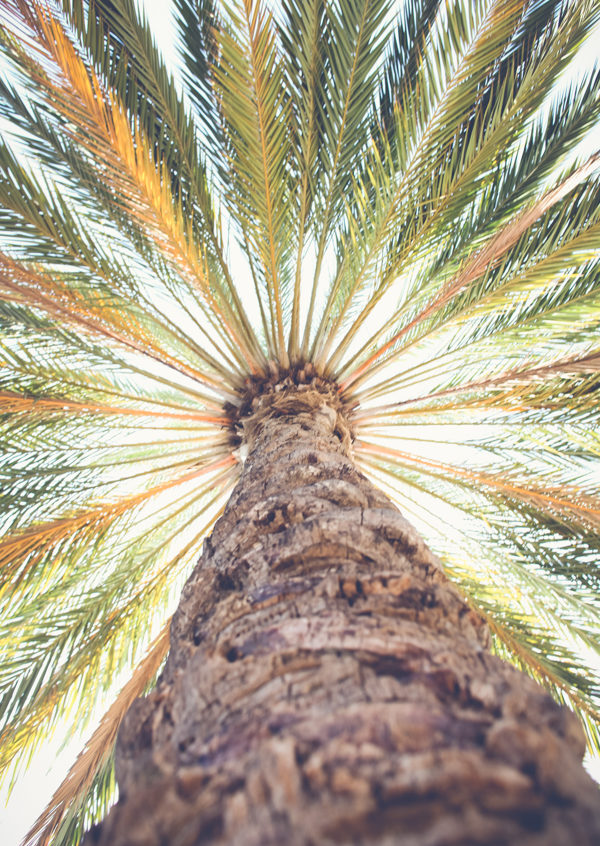
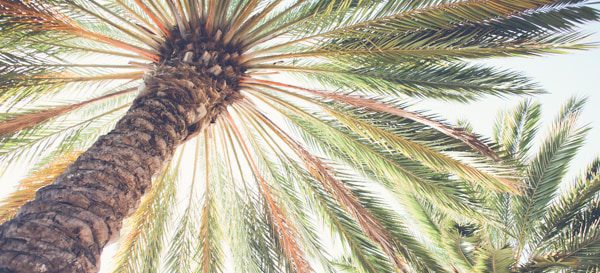
There are quite a few members of the date palm family that are common in San Diego—but the most popular of these date is the “true” date palm (Phoenix dactylifera).
The true date palm (typically referred to as just date palm) is often seen in resorts and upscale properties. Commercial and residential property owners love adding this palm to their landscape because of the desert oasis and regal vibe that it exudes. The date palm is a tall, majestic palm that can grow upwards to about 70 feet with a wide crown that can spread to roughly 30 feet.
Believed to have originated from Northern Africa and the Middle East, the date palm is one for the history books. Records from Ancient Egypt and Mesopotamia indicate that the date palm was cultivated for food and wine. Ancient Romans also used fronds, most likely from the true date palm, to symbolize victory during processions. Thus, ancient Romans used for the palm for ornamental purposes, being found in artwork from Pompeii and throughout Italy. Basically…this palm is sort of a big deal.
Throughout history, the date palm has been used for food and its decorative appeal. In San Diego, it’s no different. San Diegans love the date palm! They tower over the people of this city in upscale malls, like UTC; and throughout parking lots, like in front of IKEA. They nobly lead the way to entrances of commercial buildings and tower over stately courtyards.
Out of all of the popular dates in San Diego, the true date palm is the only one with fruit that is consumed. What fruit do we get from this palm? Why, the date—of course! This sweet fruit is highly nutritious and used in a variety of ways—from nut bars to syrups to even soap.
The date palm is a hardy plant that can tolerate cold temperatures (which we don’t have to worry much about in San Diego) to intense heat (remember their Ancient Egypt roots?). Once well-established, water maintenance is low. While we don’t recommend it, they can go weeks, even months, without being watered. Yes, they are drought tolerant, but to keep them looking their best and at optimal health, it is best to provide adequate amounts of water and fertilizer.
FEATURES
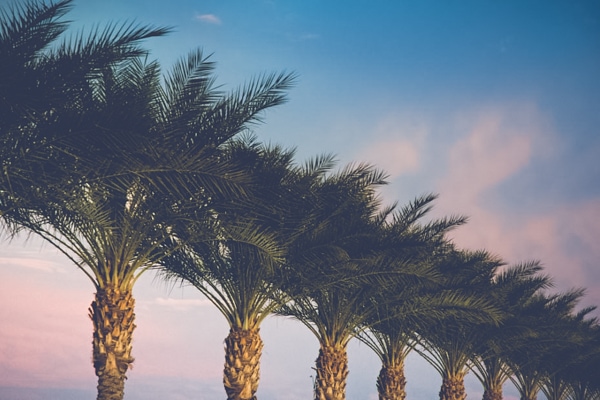
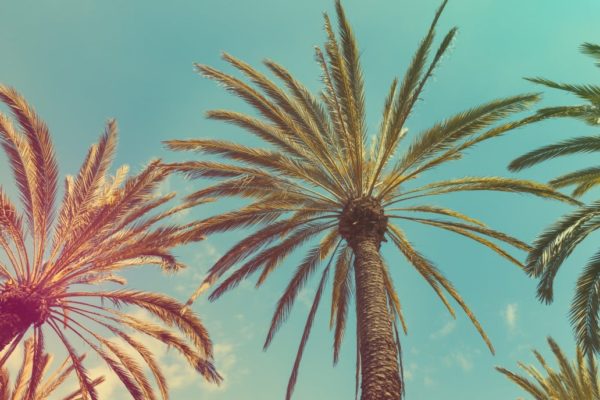
5
CANARY ISLAND DATE PALM
Phoenix canariensis
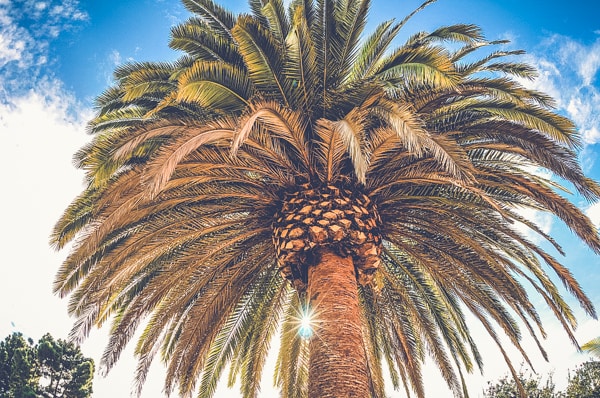
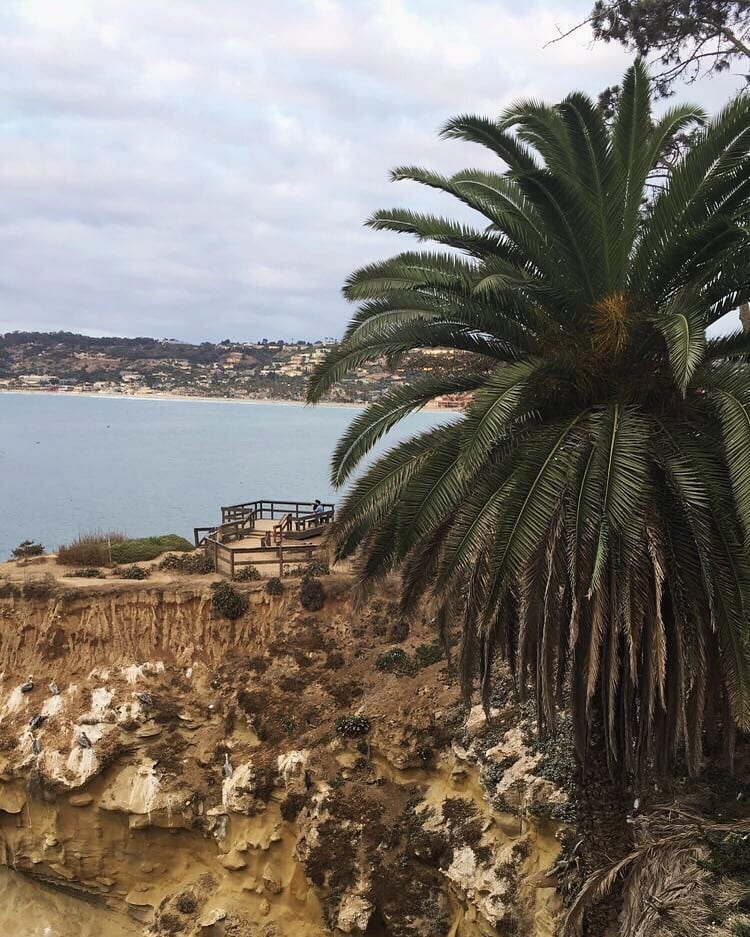
The next palm is so closely related to the date palm, that it almost looks like its twin—that is, its muscular football-player twin. We talk of the mammoth-sized Canary Island date palm, also referred to as the pineapple palm, because it—surprise, surprise—looks like a giant pineapple! Talk about distinguishable. Stemming from the Canary Islands off of Spain, these palms are built for San Diego’s dry Mediterranean climate—making them one of the most common palms in our city.
Like the true date palm, the Canary Island date palm can grow to a mature height of 30-70 feet—but unlike the true date palm, these palms are THICK. They boast of a thick canopy, thick husk base, and thick trunk. So in case you have a difficult time distinguishing the true date palm from the Canary Island date palm, just remember…
true date palm = scrawny
Canary Island date palm = THICK
When well-pruned, these palms are a beautiful, majestic addition to any landscape. Their stout husk base allows tree trimmers to prune these palms to its own exclusive style—the pineapple look. Using a method coined “ball-and-slick,” tree trimmers carve the head into a pineapple-shaped ball and scrape the trunk slick—resulting in a clean, formal display that is often seen throughout commercial properties and upscale resorts.
Keeping Canary Island date palms on a regular maintenance schedule is crucial. These palms are not self-pruning, so like fan palms, they will amass their dead fronds into an outrageously dense skirt that is not only unsightly, but is also an ideal sanctuary for rats and mice that hide under the fronds and feed on the palm’s fruit.
Hardy in nature and able to thrive in heat and drought conditions, the Canary Island date palm, unfortunately, is highly susceptible to a deadly disease called Fusarium wilt that is wiping out these palms throughout San Diego. The pathogen spreads easily, which is why tree trimmers must adhere to the strictest of guidelines in removing Canary Island date palms that have fallen victims of the disease. Sadly, there is no known cure, which is why many of these magnificent palms are disappearing throughout the county.
FEATURES
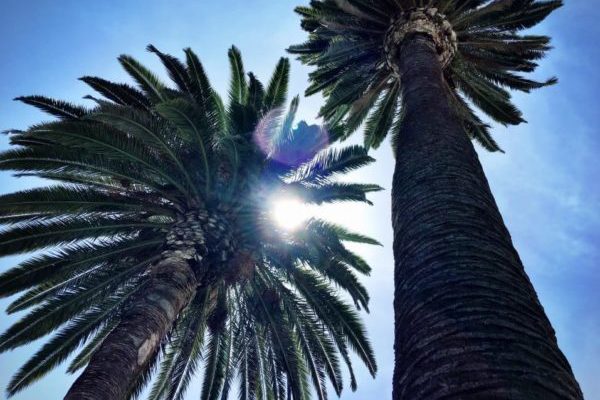
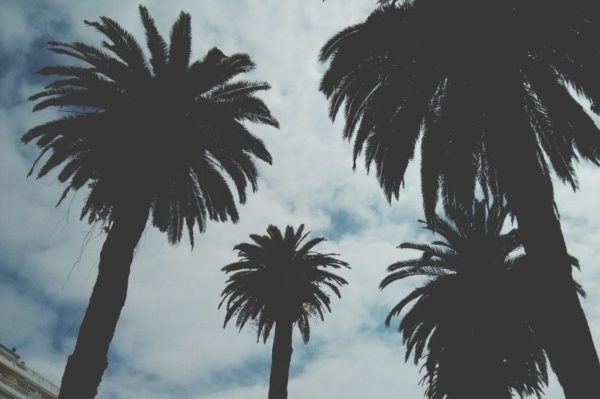
6
PYGMY DATE PALM
Phoenix roebelenii
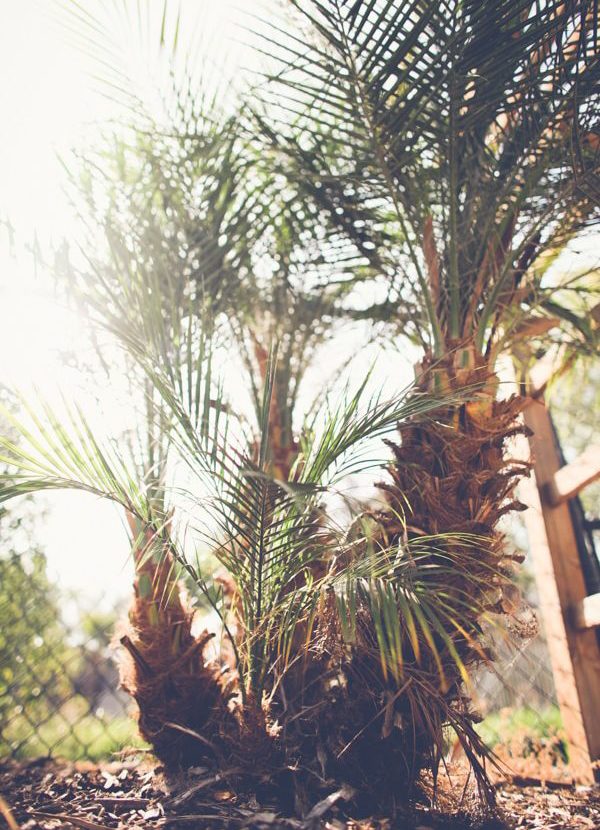
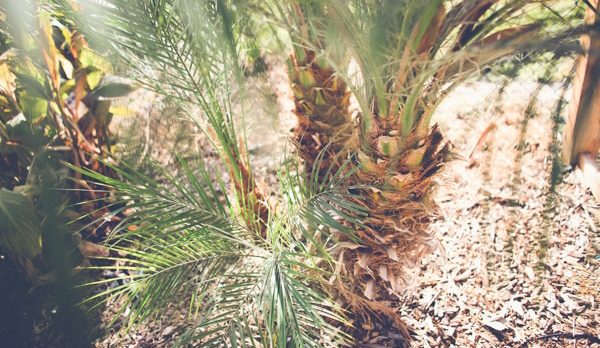
When you can easily find these little guys for less than $20 at The Home Depot, it’s no wonder that the pygmy date palm is found all over San Diego County. This palm may not make quite a grandiose look-at-me statement like its behemoth cousin, the Canary Island date palm—but it’s a favorite landscaping choice for landscapers and property owners in San Diego. They look great just about anywhere–nestled against homes and commercial buildings, greeting guests at front entrances, lining parking lots, in the backyard, front yard…anywhere.
Due to its smaller size, pygmy dates are typically found in groupings of multiple palms. Starting off at less than 2-ft tall when first bought in a container, these palms are slow-growing—so slow that two years later, you’ll swear that they’re the same size as when you first bought them. But with proper care, they can reach a mature height of 6-12 feet, with a spread of equal measurement, depending on how many palms are in the group.
Keeping the size potential of the pygmy date palm is important when choosing a planting location. Their young miniature size can make it difficult to project how big they can actually grow, so sometimes they end up being planted in spots that are too confining for, eventually, a 10-ft palm. For instance, it is common to see these palms completely blocking windows, because 10 years prior when they were planted, it was underestimated how big this 2-ft tall plant would get.
Originating from the tropics of Asia, the pygmy palm still does well in San Diego’s dry, warm climate. They are moderately drought-resistant, and when well-established, they can go more than a week—even weeks, depending on the season—without being watered. Sun preference is flexible with the pygmy date, as they can do well in shade or full sun.
The pygmy date palm’s petite size, unquestionably, makes it the easiest palm to care for in our list of the 6 Most Common Palms in San Diego. Any homeowner or gardener can easily trim off excess fronds without the worry of …well…dying—as can happen when any of the other palms on this list are attempted to be trimmed by a homeowner, or even an inexperienced tree trimmer. The pygmy date has a tendency to grow an abundance of fronds that–especially when the the plant is little–end up making it look more like a palm bush. So periodic pruning is important to maintain its appearance.
FEATURES
